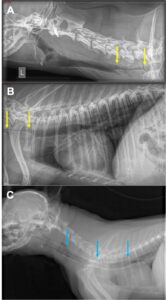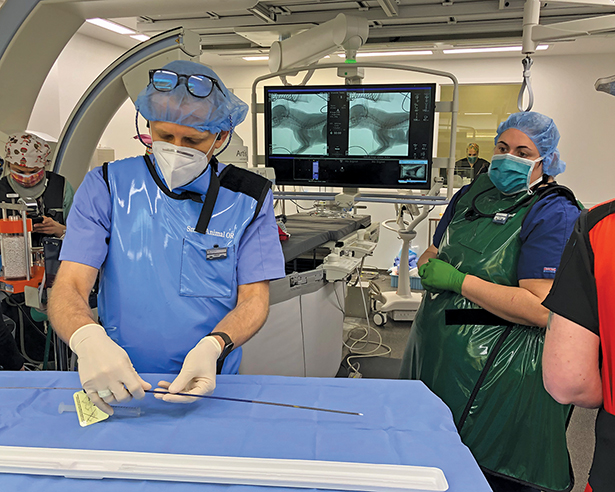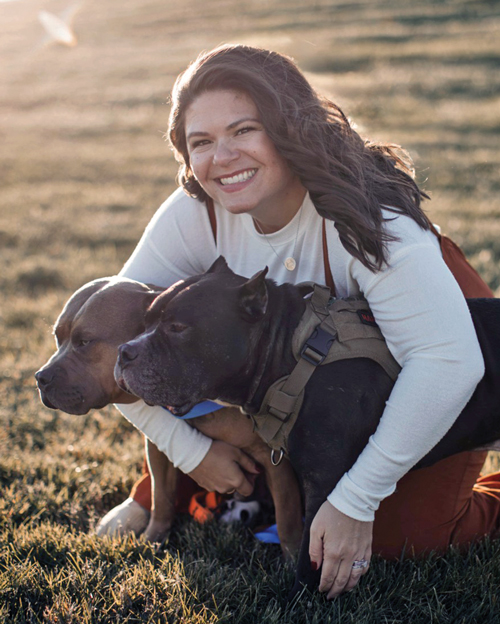Above: Dr. Arnon Gal and Dr. Jennifer Reinhart prepare a stent for placement in the Veterinary Teaching Hospital interventional radiology suite.
As of September 6, 2022, we are not offering tracheal stenting. We anticipate offering this procedure again beginning in April 2023. If you have questions, please direct them to our Internal Medicine service.
The U of I small animal internal medicine service is proud to announce that we are now offering tracheal stenting as a minimally invasive treatment for dogs with moderate to severe tracheal collapse.
Tracheal stenting is a potentially lifesaving procedure that involves the placement of an expandable, semi-rigid, mesh stent within the lumen of the trachea to hold it open and prevent airway obstruction. The procedure is performed under general anesthesia with fluoroscopic and endoscopic guidance in our new, state-of-the-art, interventional radiology suite.
Post-procedure, dogs are monitored in our ICU for at least 24 hours before discharge to their owners and a rigorous follow up schedule is needed to monitor for complications, such as stent migration, stent fracture, and granulation tissue. Stenting is generally performed as a scheduled procedure but can be performed on emergency for dogs with severe, refractory airway obstruction.
Purpose and Diagnostic Criteria

Tracheal stenting can significantly improve the quality of life of dogs with moderate to severe tracheal collapse. By maintaining a patent airway, the stent reduces or eliminates episodes of dyspnea, cyanosis, and syncope, allowing the animal to live a much more normal and safe life. Many dogs do continue to cough post-stent, so medications are often needed lifelong.
Tracheal stenting is not for everyone. Dogs with mild collapse and/or disease that can be controlled medically (medications, weight loss, environmental management) are not considered candidates. However, these animals should be monitored over time as they may become candidates in the future due to disease progression. Dogs with multiple co-morbidities are also generally not good candidates for stenting.
Tracheal stenting requires a definitive diagnosis of tracheal collapse prior to intervention. This generally involves static thoracic and cervical radiographs and fluoroscopy to evaluate for a dynamic component of the collapse. Additional diagnostics including thoracic CT, bronchoscopy, bronchoalveolar lavage, and echocardiography are also sometimes needed to identify concurrent lower airway or cardiac disease.
If you are interested in referring a patient or learning more about tracheal stenting, please call us at 217-333-5300 or email us at VTHSAM@vetmed. illinois.edu.
By Jennifer M. Reinhart, DVM, PhD, DACVIM (SAIM), DACVCP




